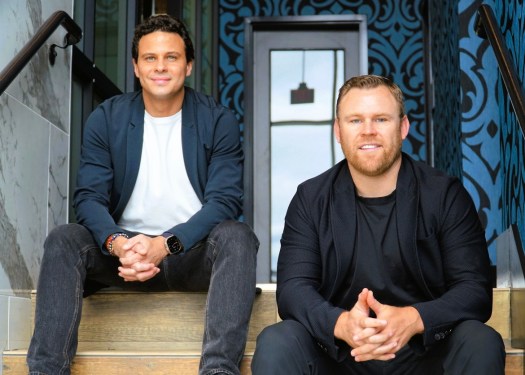It has been almost a decade since Omar Darwazah and Kyle Hendrick launched AAF Management and its first fund of 25 million dollars in 2017. Unlike many funds that have raced to dramatically increase their assets under management, the partners have intentionally kept their fund sizes small even as their reputation and returns have grown. Their latest vehicle, a 55 million dollar early-stage hybrid fund called the Axis Fund that recently closed, brings the Washington-based venture firm’s total assets to roughly 250 million dollars across four funds. The firm raised a 39 million dollar Fund II in 2021 and a 32 million dollar fund-of-funds investment vehicle in 2017 for a select group of its limited partners.
Running a 50 million dollar fund is very different from running a 500 million dollar fund, according to general partner Omar Darwazah. He explained that naturally large fund sizes can disrupt the alignment between general partners and limited partners, as it becomes more about management-fee generation than carried-interest generation, which is not a game they want to play.
Unlike typical venture capital firms that invest directly into startups, AAF is adopting elements of a fund-of-funds model. This means it invests part of its capital into a portfolio of emerging funds in addition to backing startups directly. With this fourth fund, AAF plans to invest in emerging managers’ first or second funds, which are typically under 50 million dollars, and also in their most promising portfolio companies from pre-seed to pre-IPO stages.
The firm is allocating about eighty percent of its capital to startups and twenty percent to emerging funds. This blends the two approaches into what it calls a one-stop capital-formation partner for both founders and fund managers.
So far, the Axis Fund has backed 25 pre-seed and seed-stage venture funds, along with five direct bets on early-stage and growth startups. The firm’s other general partner, Kyle Hendrick, stated that the richest dataset of private-market companies at the earliest stages of their formation over the past decade is accessed only through limited partner checks in emerging managers.
This dual strategy has granted AAF access to many promising startups. The firm is an early investor in companies such as Current, Drata, Flutterwave, Jasper, and Hello Heart. Similarly, through the funds where it is a limited partner, AAF holds indirect exposure to other unicorns including Mercury, Deel, Retool, and more recently AI firms like Motion, Decagon, and Eleven Labs. This access comes through its network of seed-fund limited partner positions in firms like Leonis Capital, Wayfinder Ventures, and Quiet Capital.
The eight-year-old venture firm claims exposure to roughly 800 venture-backed companies launched between 2021 and 2025 through these underlying managers.
With this approach, AAF focuses less on hands-on help with hiring or product for portfolio companies and more on connecting founders with later-stage capital from its network of limited partners. This service becomes especially helpful once a startup begins raising growth rounds. Hendrick noted that where they typically add the most value to a founder’s journey, especially in the early phase, is through their venture network. This means they can inject a founder directly into 45 active venture funds where they are limited partners, providing instant distribution into those ecosystems.
At the same time, AAF serves as a conduit between institutional investors, especially in the Gulf, who often prefer diversified venture exposure without managing dozens of direct relationships. Backers of this fourth fund include Abu Dhabi’s Mubadala, several US, European, and MENA family offices, general partners from leading US asset managers, a multi-billion-dollar US venture firm, and a publicly traded company.
The partners came to venture from different backgrounds. Omar Darwazah previously worked in corporate finance and private equity in the Middle East and has spent years bridging Gulf capital with US startups. Kyle Hendrick is a former entrepreneur who also worked at the UAE Embassy in the US and at a family office in Abu Dhabi, bringing an operator’s lens to AAF’s earliest deals.
Across its four funds, AAF has made 138 direct investments and backed 39 unique emerging managers, with 20 portfolio exits totaling nearly two billion dollars in aggregate value. Those exits include companies like TruOptik, MoneyLion, Even Financial, Portfolium, Prodigy, BetterView, Lightyear, Trim, HeyDoctor, and Medumo. At least six publicly traded companies have acquired its portfolio companies, including TransUnion, Giant Digital, GoodRx, and Affirm.
The firm states that this all adds up to some of its previous fund vintages ranking in the top decile in terms of net total value to paid-in capital for their respective vintages, according to data from Cambridge Associates and Carta. Darwazah said their strategy allows them to identify signal from noise and increase their probability of backing outliers, which he defines as fund returners, companies that return ten times the cash-on-cash, and seed-to-unicorn investments.

